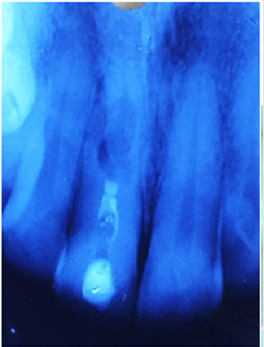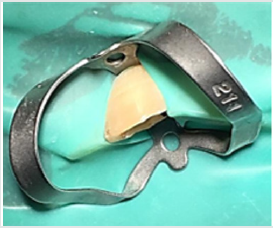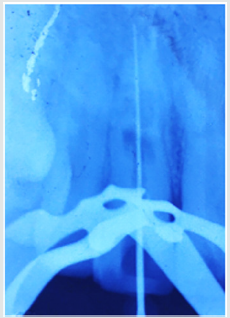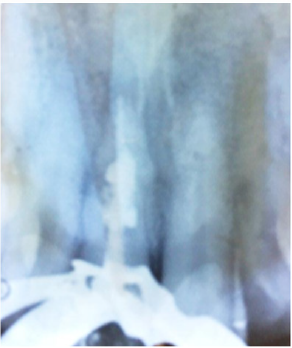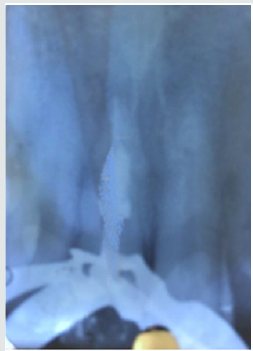Wednesday, July 31, 2019
Lupine Publishers: Study the Corrosion and Corrosion Protection of Br...
Lupine Publishers: Study the Corrosion and Corrosion Protection of Br...: Material science journal | Lupine Publishers Abstract Brass is an important metalloid which is used in construction of ...
Monday, July 29, 2019
Lupine Publishers: The Biodiversity of Aquatic Gastropods in the Step...
Lupine Publishers: The Biodiversity of Aquatic Gastropods in the Step...: Earth and Environment journals | Lupine Publishers Abstract This study describes the species diversity, abundance and bioma...
Tuesday, July 23, 2019
Lupine Publishers: A Women’s Place is at the Heart of the Home | Lupi...
Lupine Publishers: A Women’s Place is at the Heart of the Home | Lupi...: Journal of Gynaecology | Lupine Publishers Opinion One of the most dangerous things happening right now is the breakup of t...
Friday, July 19, 2019
Lupine Publishers: Current Investigations in Agriculture and Current ...
Lupine Publishers: Current Investigations in Agriculture and Current ...: Journal of Agricultural Research | Lupine Publishers Acquisition, Preservation and Classification (Malay Version) Opinion ...
Wednesday, July 17, 2019
Lupine Publishers: Printable Self-Assembled Peptide Bio-Inks: Promisi...
Lupine Publishers: Printable Self-Assembled Peptide Bio-Inks: Promisi...: Journal of Nanomedicine | Lupine Publishers Abstract In the current era of research and development, nanotechnology and add...
Lupine Publishers: The Definition Technological Parametres of One Cha...
Lupine Publishers: The Definition Technological Parametres of One Cha...: Lupine Publishers-Open access journal of Textile and Fashion Designing Abstract In article it is showed the definition technolog...
Lupine Publishers: Lupine Publishers - Advances in Robotics & Mechani...
Lupine Publishers: Lupine Publishers - Advances in Robotics & Mechani...: Abstract One of the prominent applications of robots is in assistive therapy using humanoids. Robots are now playing a vital rol...
Lupine Publishers: Lupine Publishers - Advances in Robotics & Mechani...
Lupine Publishers: Lupine Publishers - Advances in Robotics & Mechani...: Abstract This investigation approaches the artificial neural networks applied to the ore drying process in carbonate-ammoni...
Management of Internal Root Resorption with Bioceramic Material on Permanent Tooth-A Case Report | Lupine Publishers
Lupine Publishers | Journal of Pediatric Dentistry
Abstract
Internal root resorption (IRR) is a category of pulp disease
characterized by the loss of dentine as a result of the action of
clastic
cells stimulated by pulpal inflammation. The objective of this case
report was to account for the diagnosis and management of an
internal root resorption without perforation. The patient, a 26-year-old
male, came to Guru Nanak Institute of Dental Sciences and
Research, West Bengal, without having symptoms in the tooth. Endodontic
treatment was performed using the following methods:
irrigation of the root canal with 2.5% of sodium hypochlorite, then
calcium hydroxide (CH) was applied as intracanal medicament
for one month. Complete instrumentation was done with Hyflex One File
(Coltene) and obturation with corresponding guta-percha
and Roeko Guttaflow Bio seal sealer (Coltene). The patient was checked
after one week and then after six months. He did not have
any symptoms and IOPA radiograph did not show any further progression of
the lesion.
Introduction
The Glossary of the American Association of Endodontists
defines internal root resorption (IRR) as a condition associated
with a physiological or pathological process that results in the
loss of dentin, cement and bone [1]. Most teeth with internal root
resorption are symptom free and are first clinically recognized
through routine radiographs. However, when resorption actively
progresses, the tooth is only partially vital and may present
typical symptoms of pulpitis. Bell (1830) first reported about IRR.
Mummery (1920) called it “pink tooth of Mummery” due to the
presence of pink discoloration on the crown [2]. This condition,
although rare, is more frequent in the male population. The IRR is
more common in the presence of a periapical lesion. Its prevalence
was estimated between 0.01% and 1% depending on the
inflammatory condition of the pulp [3]. The IRR could be caused by
several stimuli: trauma, chronic inflammation of pulp/periodontal
ligament, heat created by the friction of drills during the preparation
of cavities, cracked tooth syndrome, tooth reimplantation and
orthodontic treatment [4]. There have also been reported cases of
internal reabsorption caused by Herpes Zoster virus [5]. The IRR
is caused by inflammatory stimuli which produce an alteration of
the odontoclast inhibitory mechanism resulting in an alteration of
the pre-dentine layer. The vascular change in the pulp produces
hyperemia increasing oxygen tension and causing an acidic pH level
that attracts multinucleated cells, odontoclasts and dentin clasts.
Dominance of inhibitory substances such as OPG (osteoprotegerin)
as activators of RANKL (receptor activator of factor kappa B ligand)
followed by swelling, results in the rupture of protective coatings
allowing the invasion of odontoclasts and initiating resorptive
patterns. Connective, post-resorptive activity tissue transforms into
metaplastic granulation tissue [6]. Generally, IRR detection is done
by X-rays, however, the use of cone beams computed tomography
(CBCT) has been reported to be highly useful for diagnosis in
endodontics, since it shows the lesion in detail and includes
information about adjacent anatomy, which X-rays does not provide
[7]. The periapical radiography is limited because it provides a twodimensional
image [8], whereas diagnosis by CBCT shows images
in all their dimensions through tomographic slices, without image
overlay [9]. Also, diagnosis by CBCT may improve the accuracy
and efficiency in the prognosis of the tooth [10]. Therapeutically,
the biomaterial employed can influence the prognosis of the
nonsurgical endodontic treatment done for extensive internal root
resorption [11]. MTA is most commonly used in these cases because
of its sealing ability, biocompatibility and potential induction of
osteogenesis and cement genesis and it can be used in a humid
environment [12]. Another study using an experimental immature
tooth model, demonstrated that the MTA also increased the
fracture resistance of bovine incisors when submitted to different
reinforcement treatments Recently bioceramics are widely used in
endodontics. Roeko Guttaflow Bio seal (COLTENE) is a bioceramic
endodontic sealer which claims to avoid shrinkage upon setting as
it has Zirconium oxide is used as the radiopacifier, and the material
is claimed to be aluminum-free, non-soluble and does not shrink
during setting. It gives advantage of flow of material as well as
sealing ability which better bond with the corresponding gutta
percha used for obturation [13]. The purpose of this case report is
to describe the diagnosis and clinical management of an internal
root resorption with bioceramic material.
Case Report
Male patient, 26 years old, treated at the post graduate
department in Guru Nanak Institute of Dental Sciences and
Research. The patient reported no pain at the time of appointment
the chief complaint was discoloration of the front tooth which was
traumatized 5 year back. Vitality tests using Endo-Ice (Coltene,
Switzerland) were performed in [11]; the tooth gave negative
response. The patient did not present tooth mobility and periodontal
pockets. IOPA radiograph of the affected tooth#11 showed an oval
enlargement (ballooning out) of the root canal space (Figure 1).
The pulp chamber and canal cannot be followed throughout the
lesion. Radiograph performed at different angulation to confirm
the resorptive lacunae is a continuation of the distorted border
of the root canal. Endodontic treatment was suggested; therefore,
isolation protocol was performed to make the cavity opening
later (Figure 2). Working length of the tooth was determined by
IOPA radiograph using #15K file (Figure 3) and the result was
confirmed with apex locator Canal Pro (COLTENE). After removing
the pulp tissue properly chemical-mechanical instrumentation
was performed with Hyflex One File (COLTENE) and irrigation
was done with 1ml of 2.5% of sodium hypochlorite between each
time instrumentation with 30-gauge side vented needle. This was
followed by irrigation with normal saline to remove any remnants
of hypochlorite, later canal was dried with absorbent points. Ca
(OH)2 dressing was given for 1month and the medicament was
changed weekly. After one month, temporary restoration was
removed with [4] round diamond bur, canal was irrigated with
5 mL of 2.5% sodium hypochlorite (NaOCl) and 5 mL of 17% of
ethylenediaminetetraacetic acid for removing the Ca (OH) dressing
and then the canal was flushed with normal saline and dried.
After removing the medication, obturation was done with Hyflex
corresponding Gutta Percha and the remaining pulp chamber was
obturated with Guttaflow Bio seal sealer (Figure 4). Access cavity
restoration was done with light cure composite resin. The patient
was recalled after 6 and 12 months (Figure 5, 6) for clinical and
radiographic follow up. Clinical examination of tooth was functional
without sensitivity to percussion or palpation [11].
Discussion
There is always a dilemma of whether to treat a tooth
with a questionable prognosis endodontically or extract it and
subsequently place an implant. Bell first reported a case on
internal resorption in 1830. Since then there have been numerous
reports in the literature [14]. Two types of internal root resorption
are generally described: the internal root canal inflammatory
resorption and the internal root canal replacement resorption. In
the inflammatory resorption, the resorptive process of the intraradicular
dentin progresses without adjunctive deposition of
hard tissues adjacent to the resorptive sites. The phenomenon is
associated with the presence of granulation tissues in the resorbed
area and identifiable with routine radiographs as are radiolucent
zone centered on the root canal. In the replacement resorption,
the resorptive activity cause defects in the dentin adjacent to the
root canal, with concomitant deposition of bone like tissue in
some regions of the defect. It results in an irregular enlargement
of the pulp space with partially or fully obliterated area of the pulp
chamber. Internal resorption is the result of an inflamed pulp and
the clastic precursor cells recruiting through the blood vessels.
Treatment of internal resorption is quite predictable as it is easy
to control the process of internal root resorption via severing
the blood supply to the resorbing tissues with conventional
root canal therapy. Intraoral X-ray of IRR is characterized by the
radiographic appearance of an oval shape enlargement within the
pulp chamber or the root canal. However, the early diagnosis of
the IRR is difficult by examination of a conventional X-ray. If IRR
is suspected, several shots under different angles of incidence are
recommended. In the treatment of internal resorption, the use of
calcium hydroxide also has two other important goals: to control
bleeding, and to necrotize residual pulp tissue and to make the
necrotic tissue more soluble to sodium hypochlorite. Because of
the limited access by instruments to all areas of the resorption
cavity, chemical means are needed to completely clean the canal.
Studies on the effectiveness of sodium hypochlorite and calcium
hydroxide to remove the resorptive and other tissues from the root
canal indicate that they have an additive or even synergistic effect
[15]. In cases where the resorption has not perforated, it is usually
enough to use calcium hydroxide paste in the canal once from 1
to 2 weeks. This allows removal of the residual tissue at the next
appointment by irrigation and instrumentation. In our treatment
protocol, we choose Guttaflow Bio seal (COLTENE) sealer due to
its versatile property of Bioceramic component & gutta-percha
particles. Upon contact with fluids, this material provides natural
repair constituents, such as silicates and calcium, which contribute
to the activation of biochemical processes, providing additional
support to the root canal regeneration. A novel material for root
canal filling that combines gutta-percha in a powder form with a
particle size of less than 30 μm and a sealer. The sealer has also
showed least cytotoxicity as well as inflammatory reaction [15].
Conclusion
It is puzzling in diagnosing and treating a root resorption
case, therefore a suitable management is perilous. Thorough
investigations and discussion are required for the management
especially when the prognosis of the tooth is poor upon consultation.
Absence of periapical lesion and no signs and symptoms at the
12-months review provided a favorable outcome to once a tooth of
hopeless prognosis.
For more Open Access Journal on Pediatric Dentistry articles Please Click Here:
To Know More About Open Access Publishers Please Click on Lupine Publishers
Saturday, July 13, 2019
Lupine Publishers: Lupine Publishers LLC | Publons
Lupine Publishers: Lupine Publishers LLC | Publons: Lupine Publishers | Publons Publons is a commercial website that provides a free service for academics to track, verify, and showc...
Lupine Publishers: Lupine publishers LLC | Lupine Publishers Review –...
Lupine Publishers: Lupine publishers LLC | Lupine Publishers Review –...: Lupine publishers LinkedIn SlideShare is an American hosting service for professional content including presentations, infographic...
Lupine Publishers: Lupine Publishers LLC | ZoomInfo.com
Lupine Publishers: Lupine Publishers LLC | ZoomInfo.com: Lupine Publishers ZoomInfo is a subscription-based software as a service (SaaS) company based in Waltham, Massachusetts that sell...
Lupine Publishers: Lupine Publishers Group
Lupine Publishers: Lupine Publishers Group: Lupine Publishers Group Lupine Publishers is a world’s leading Online Publishing repository, a genuine publisher with quality medical...
Thursday, July 11, 2019
Analysis of Reasons for Extraction of Permanent Teeth in Children in Senegal: A Retrospective Study | Lupine Publishes
Lupine Publishers - Journal of Pediatric Dentistry
Abstract
Material and method: A retrospective descriptive study, based on consultation registers and patient records, was performed. Patients between the ages of 6 and 15 who had permanent tooth extractions between January 2014 and August 2018 were included. A questionnaire including socio-demographic data, reason for consultation, reason for extraction and extracted teeth was included allowed to collect the data.
Results: A total of 321 patients aged 6 to 15 years received 375 permanent tooth extractions (1.16 teeth / child). Dental caries and its complications were the main reasons for extractions (94.7%).
Conclusion: Dental caries remains a real public health problem in developing countries. Decision-makers need to focus on strategies for the prevention and management of early childhood oral conditions to avoid the extraction of permanent teeth.
Keywords: Reasons for Extraction; Permanent Teeth; Child, Tooth Decay; Senegal
Introduction
Materials and Methods
Results
Discussions
Conclusion
For more Lupine Publishers Open Access Journals Please visit our website:
For more Open Access Journal on Pediatric Dentistry articles Please Click Here:
Wednesday, July 10, 2019
Lupine Publishers - Journal of Pediatric Dentistry
Management of Mesiodens In Mixed Dentition- Molariform and Tuberculate: A Case Report by Reena Augustine in Interventions in Pediatric Dentistry Open Access Journal - Lupinepublishers
Timely intervention is the key to any setback in the mixed dentition.
Teeth which are supplemental to the normal dentition are
supernumeraries, the most common being mesiodens, present in the
premaxillary region. Certain pathological consequences may
arise due to mesiodens like unaesthetic midline diastema, rotation,
displacement, root resorption and cyst formation. The current
case report presents the management of developing malocclusion in the
anterior region due to the presence of mesiodentes- a
molariform and a tuberculate. The molariform mesiodens was impeding the
eruption of the maxillary right central incisor, thus
the surgical removal of both mesiodentes was planned and executed. In
addition to this soft tissue uncovering was done for the
unerupted maxillary central incisor. On follow up, uneventful healing
was observed successfully. Supernumerary teeth, or hyperdontia, is a term that describes
teeth that are surplus in number when compared to the normal
complement of teeth [1]. The etiology of supernumerary teeth
remains unclear and not yet completely understood [2]. Among the
various proposed theories that have attempted to explain the causes
behind the development of supernumerary teeth, current literature
favors the ‘lamina hyperactivity theory’ that states hyperdontia
results from independent, locally conditioned hyperactivity of the
dental lamina [1]. The most commonly occurring supernumerary
tooth is the ‘mesiodens’, a term that was initially coined by Balk
in 1917.As the name suggests, the mesiodens is usually located
mesial to the central incisors in the premaxillary region [3].
To Know More Please Click on Below Link
For more Lupine Publishers Open Access Journals Please visit our website:
For more Open Access Journal on Pediatric Dentistry articles Please Click Here:
To Know More About Open Access Publishers Please Click on Lupine Publishers
Monday, July 1, 2019
Lupine Publishers: Insight Virtual Humanoid Robotics Modeling: the Ul...
Lupine Publishers: Insight Virtual Humanoid Robotics Modeling: the Ul...: Insight Virtual Humanoid Robotics Modeling: the Ultimate Level 0f Artificial Intelligence by Sadique Shaikh in ARME in Lupine Publisher...
Subscribe to:
Posts (Atom)
980 nm Diode Laser: A Good Choice for the Treatment of Pyogenic Granuloma
Abstract Pyogenic granuloma is a benign non/neo plastic mococutanous lesion . It is a reactional response to constant minor trauma and ca...
